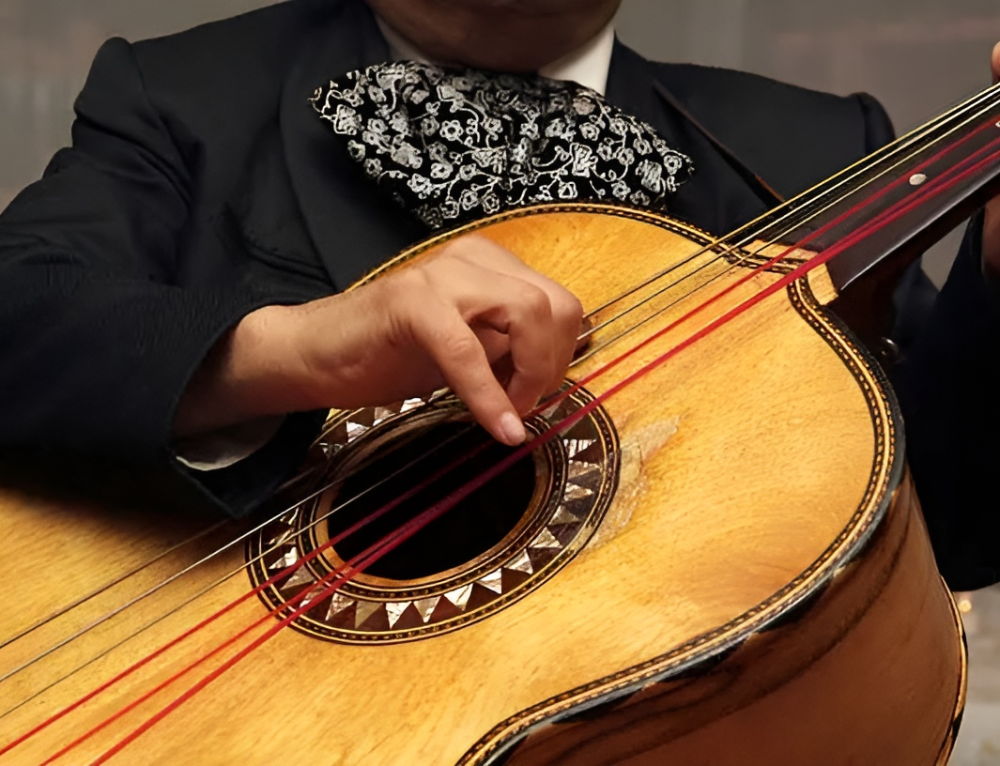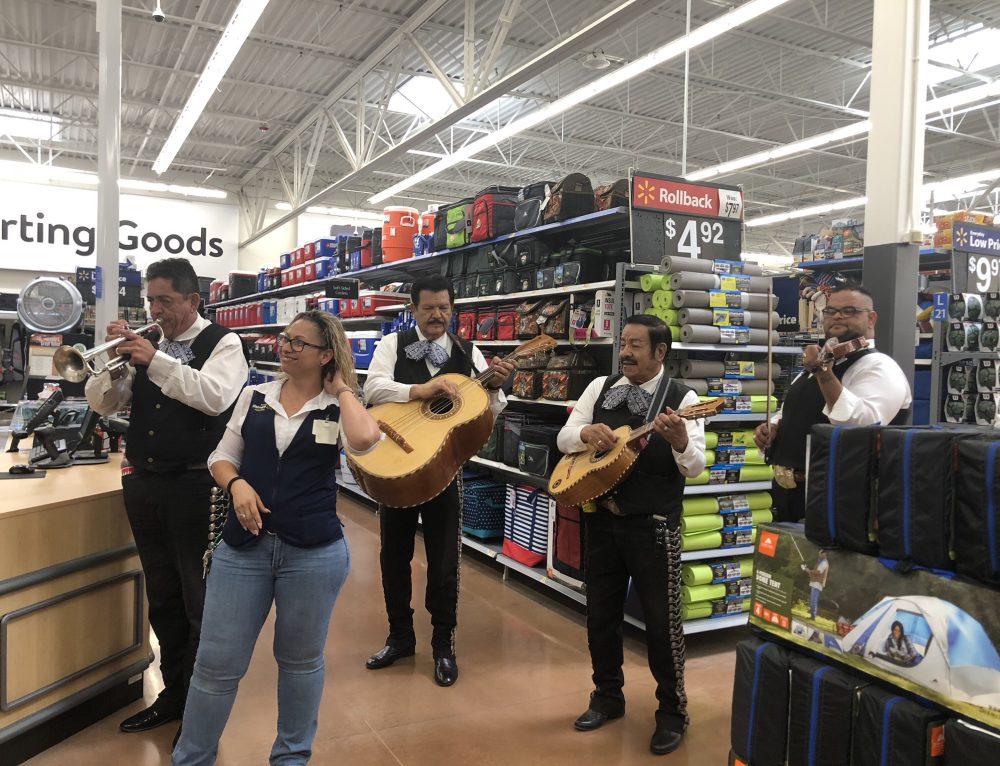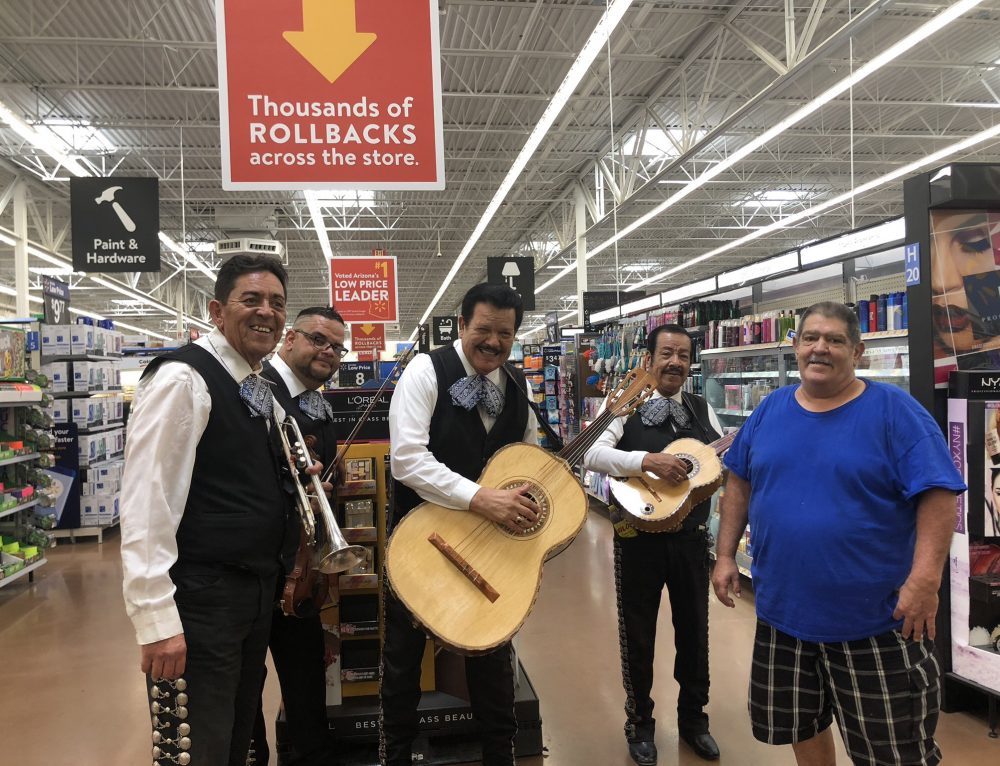The rich quality of Mexican culture is very much evident in mariachi music. This Mexican-traditional classic is widely known, not only for its strength in passing strong relevant messages but also for its effortless ability in producing ever-soothing and cheerful sounds.
The mariachi instruments, which also include the voice, are responsible for this advantage. Surely, these instruments have different sounds, pitches, and tones. So we can say that each of these instruments plays different roles to produce the very popular and soothing rhythmic melodies of mariachi music.
Let’s see how each instrument adds its own splendor to the mariachi ensemble right away.
1. The Guitarrón de Golpe
The guitarrón is probably the most special instrument of mariachi music and can be said to be the identity of mariachi music. Its deep and rhythmic sound which is original to mariachi music, defines the spirit of mariachi music itself. Mariachi musicians played the guitarrón since the 16th century, even before the inventory of the acoustic guitar which we all know today.
The Mexican name ‘Guitarron’ refers to it as a large “bass line” guitar. And when any of its six strings are pulled it produces a rich bass sound which serves as the base voice of the mariachi ensemble as well as leads other instruments in the band. The guitarrón produces the rhythm and is commonly referred to as ‘las armonias’(rhythm instruments). This fretless ‘guitar’ produces a distinctive timber sound quality that is as warm as it is powerful. The low mellow sound of the guitarrón makes it very much perfect for a ballad.
Of course, guitarrón musicians also play modern guitars too. Charmín Correa, Carlos Santana, Sergio Vallin of the Mana band, Fher Olvera, and many others have made a significant impact in playing the guitarrón even in their own Mariachi band performances.
2. The Vihuela Mexicana
The vihuela is similar to the guitarrón and is also a ‘las armonias”, which means that it also helps to influence the rhythm of the ensemble. However, apart from a little difference in the size of the sound box, instead of producing bass sounds, the five-string instrument produces a very handsome tenor sound. And unlike the guitarrón, it has frets.
The la joroba, as it is referred to by indigenous mariachi musicians, works with the guitarrón to enhance rhythm and mariachi musical guide. The vihuela produces a full, harmonized, and rich sound when the strings are strummed with all the fingernails- like a layman would handle any guitar. And a different sound that is brighter, clearer, and more precise is produced when the strings are picked- this style of strumming is called ‘la pua’. This bright sound comes out perfect if it is struck with the fingernails -that’s why most Vihuela players keep long fingernails.
3. The Violin
The Violin is probably the most interesting role in the mariachi ensemble. They also have the largest group of players, and like the acoustic guitar, it is also very popular. The violin produces a soothing light flavor sound which gives the band its tone and serenity.
The 3-string instruments’ tone range from a light cheerful pitch to a deep ode tune, and is usually played with significant vibrato weight.
The strong vibrato sounds which is the way of mariachi music help to set up the mood and add weight and gravity to the ensemble. Thus, a mariachi violinist must have firm hands to produce enough vibrato which helps to add weight, fill up spaces and give the song gravity. The violin is also used as a counter-melody instrument with the trumpet to produce a mixed feeling of brightness and awareness.
4. The Acoustic Guitar
Mariachi is popularly known as a string-instrument music, so we have yet another guitar. Now, it’s the regular guitar we all know. At least one acoustic guitar is used in a mariachi band. The very popular sound of the acoustic guitar polishes the ensemble and gracefully elevates the melody.
The acoustic guitar is generally multipurpose in that it can be used to support the guitarrón and the vihuela to elevate the rhythm or can be used as a lead(riffs). It can be used to produce arpeggio effects that bring more life to the ensemble. It is also used for solos, fills, counter-melody, and melody.
5. The Trumpet
Even as a traditional classic, mariachi music still makes use of some very modern instruments, and one of them that is very crucial in a mariachi band is the Trumpet. It replaced the cornet as the instrument used to play leads and counter melodies.
The high-pitched sound of trumpets produces calling sounds which are used for intro kick-off fills, as counter melodies with violin, and as a lead sometimes. The Trumpet has this vibe of liveliness that brings joy to the whole flow of the music. The Trumpet creates awareness in mariachi music. It adds depth and modern style to the mariachi music.
6. The Harp
Before the mariachi musicians fell towards the use of the popular guitarrón, mariachi bass lines were handled by the harp. However, it is not entirely wiped out as it can still be seen used in bands. The harp is now used to supplement the guitarrón as a baseline instrument and can be used to play melodic lines too.
The harp can be played as a bass instrument or as a high pitch instrument or even both. That means you could do the work of the guitarrón and of any of the melodic instruments and still get a good sound.
7. The Voice
In the tradition of mariachi music, the voice is regarded as an instrument so we’ll include the voice. Like any other music, very little message is passed in music without voice. Mariachi music requires a singer that can handle low-pitch voices as well as he can handle the low pitch. The voice must be clear and soft, vibrant and still.
The voice describes the mood and sends out clear messages in every performance that connects to the audience. This is because the audience tends to get in with the lyrics and love the message. They are also able to sing along familiar words.
You Can Have This Experience at Your Event
For ballads, birthdays, and a lot of other events where people seek to elevate the mood and promote the right serenity they seek after mariachi music. The guitarrón, vihuela, acoustic guitar, the voice, and a host of others are used to achieve the unique mariachi ensemble which is most sought after in these events.
The tone of each instrument and how they are handled defines the mariachi music. And while the traditional classic still maintains its age-long instruments collection, it has also done well to incorporate modern instruments too.
The quality of any mariachi band sound depends on the instruments used and how it is played. Thus, no mariachi musical instrument can be seen as less important. In general, a more complete instrument means a more complete and original mariachi sound.
Do you want to experience this unique rhythm of mariachi music at your events?
Contact Mariachi Alegre De Tucson now. We are specialist mariachi musicians and we very much understand how each of these instruments enhance moods in events. To get the full experience of mariachi music you can call us to perform at your events. Call us or visit our website for more details.






